Along the south west coast of Ireland, to the north of Cork, Ireland, is the quaint country town of Blarney. And in this town, which is set against a lush backdrop of traditional green countryside, stands Blarney Castle––a medieval stronghold with an impressive 600-year history that, unlike many castles (derelict or otherwise) in the United Kingdom and Ireland, still manages to attract droves of historians, artisans, thrill-seekers and holidaymakers…not to mention romantic enthusiasts hoping to plant their lips on the legendary Blarney Stone.
History of Blarney Castle
The site upon which the current Blarney Castle stands dates back to well before 1200 AD, where it is believed to have housed a timber structure of modest construction –– the framework of a solid fortress to come –– however, there is little evidence of this building’s existence that historians can claim with certainty.
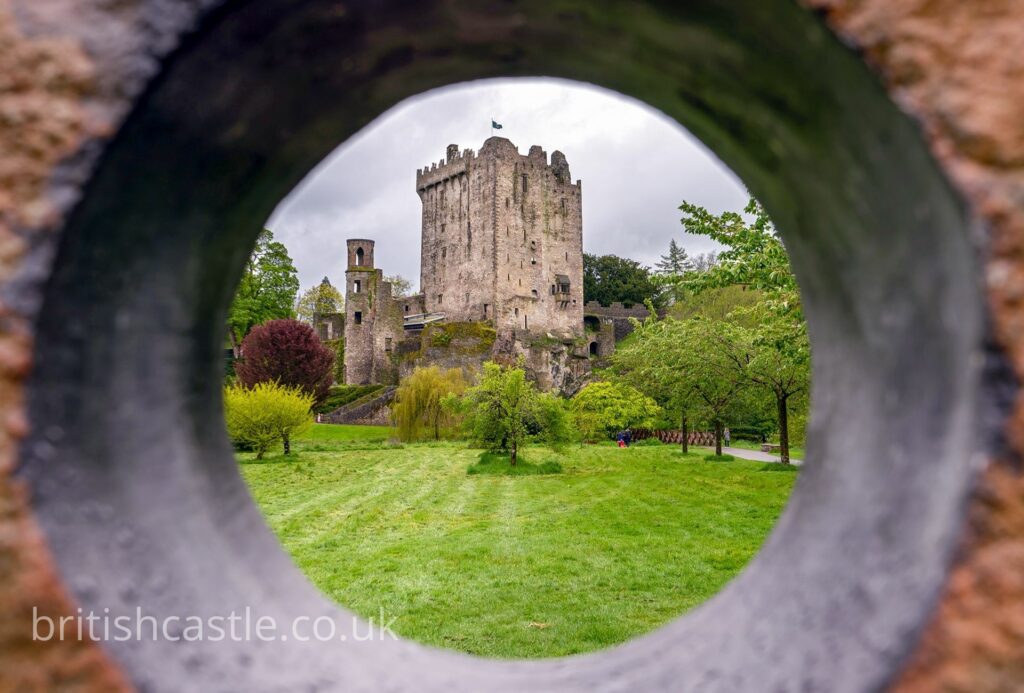
Around this time, the recently coronated King Henry II of England was being urged by clerics under Bishop Arnold of Lisieux to send an infantry of men to invade Ireland. With this in mind, one can imagine the purpose and composition of such a structure being erected in the midst of growing nationalistic turmoil.
Whatever the outcome, the timber house at the site of Blarney is presumed to have thrived during its brief lifetime –– in fact, the simple framework was even bolstered and reinforced by a stone fortification in around 1210 AD, subsequently rebuilt. And, like its predecessor before it, this imposing battlement would stand firmly in place, this one for another two and a half centuries
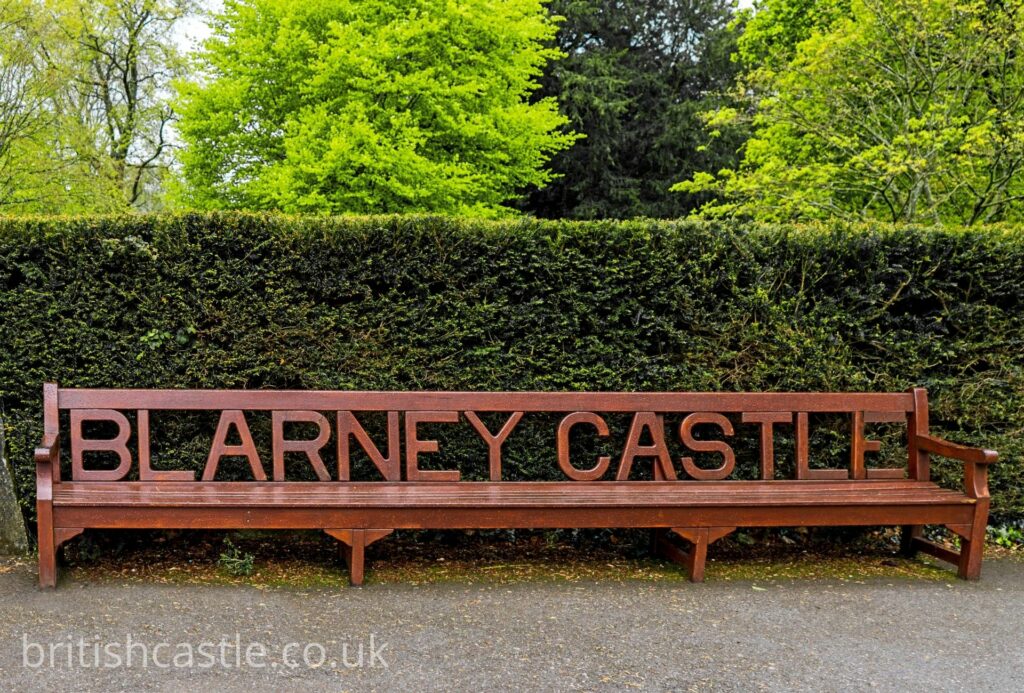
Blarney Castle and Cork City throughout the years
By 1314, tensions between Scots and England began to surface. Unafraid of letting his allegiances known, Cormac MacCarthy, King of Munster (one of the provinces in present-day Southern Ireland), gifted Scotland’s Robert the Bruce a militia of 5,000 men to help him in his fight against England’s King Edward II during the Battle of Bannockburn –– a battle the Scottish easily won.
As a result of the victory, Bruce would go on to present the MacCarthy clan with the Stone of Destiny, a carboniferous slab of limestone rock, that would go on to become the famous Blarney Stone. Upon receipt, Cormac MacCarthy placed it within Blarney Castle’s battlement. While the Blarney Stone is a significant draw for visitors, it is only a part of the larger array of attractions available at Blarney Castle.
Cormac Laidir MacCarthy, Lord of Muskerry
By the mid 15th century, the stone structure at Blarney had given way to years of age and the newly installed owner of Blarney Castle, and descendant of the original King of Munster, Cormac Laidir MacCarthy, Lord of Muskerry, went about renovating the fortress’s layout in 1446 and subsequently rebuilt it. The stone structure was demolished and subsequently enlarged –– while the existing Blarney Stone, carefully preserved, was removed and reinstalled in the building that stands to this day.
The new outpost, built along the cliff’s edge on a wide swath of land, featured many architectural and technical improvements consistent with time. A range of lower walls 15 feet high was installed at an angle that seemed to magnify the already imposing structure. What’s more, the castle was built with some peculiar design elements, including the sharp narrowing of floors the higher up the stonework. By the end of the new construction, Blarney Castle was an architectural marvel, one that attracted hungry rival clans from far and wide. Despite its possession by the MacCarthy tribe in 1446, it would change hands a number of times throughout its record.
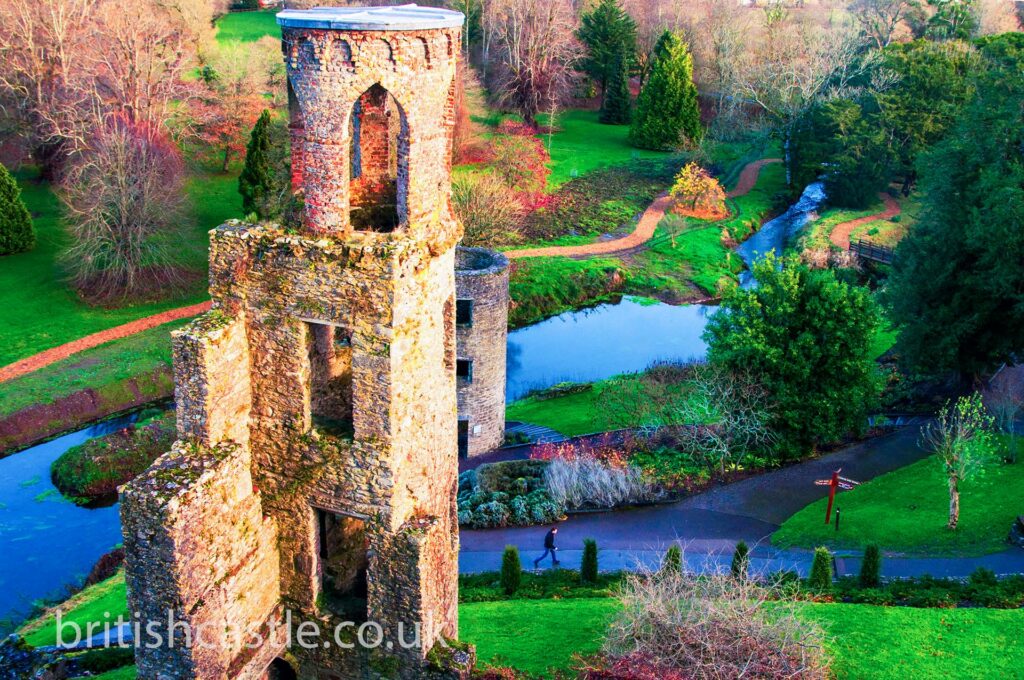
Nearly one hundred years later, the MacCarthys were still fending off Blarney Castle from enemy factions. In 1521, things came to a head with a familiar adversary –– the opposing Desmond clan –– who attacked the MacCarthys in an unsuccessful attempt at usurpation in what became known as the Battle of Mourne Abbey. Joining forces with other family members, the MacCarthy chieftain, Cormac Oge, slaughtered members of the Desmonds and brought about a standstill to local infighting for a number of years. Unfortunately, bigger players inserted themselves during the next few decades. Players who were not as easy to scare off.
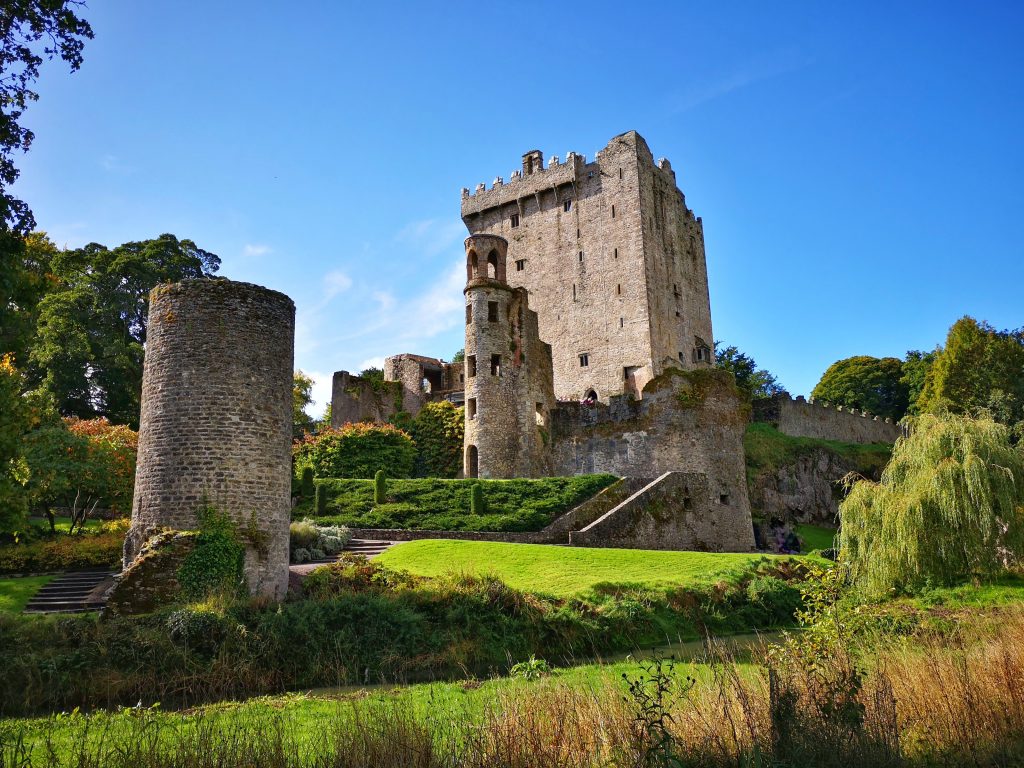
The Crown and Blarney Castle
Following the Crown of Ireland Act of 1542, the country’s parliament was given the name “The Kingdom of Ireland”, and the current ruler of the Crown, King Henry VIII became the first recognised King of Ireland since 1169. This move was historic to the Irish in that one ruler would now wield influence and make decisions over two separate kingdoms (Ireland wouldn’t officially join the Kingdom of Great Britain, forming what would become the United Kingdom of Great Britain and Ireland, until 1801). Tensions were high, but such influence wouldn’t reach the door of Blarney Castle for a number of years.
In 1558, Elizabeth I, daughter of Henry VIII, had assumed the throne, becoming Queen of England and Queen regnant of Ireland. The Protestant monarch was given autonomy of the Irish, most of whom adhered to a strict Catholic faith and were willing to openly defy the queen’s authority –– even offering assistance to her plotting enemies. Subjects who maintained this degree of resistance could also be found in Munster.
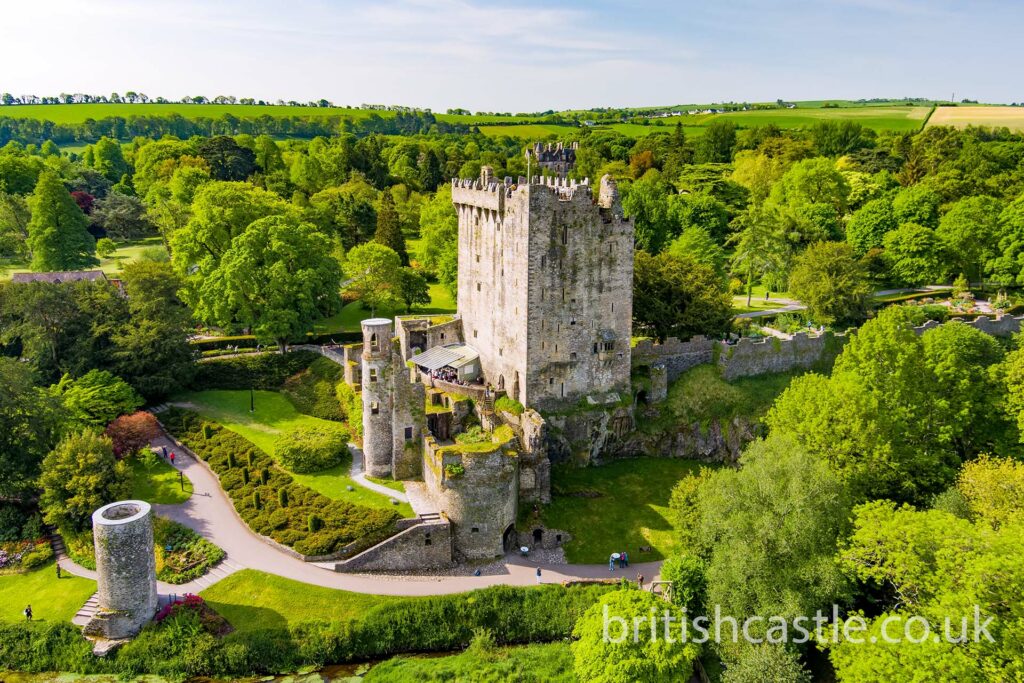
Following a series of uprisings, Elizabeth’s forces were sent into Ireland and mass slaughters of men, women and children occurred. During this attempt at forced nationalistic conversion to Protestantism, the Queen also laid out her policies regarding land ownership, a move that would see many of her courtiers assume properties in order to prevent her dissidents from granting bases to the Spanish (with whom Elizabeth spent much of her Golden Ages fighting against in their quest for greater power in England).
With major strongholds in Ireland in her sight, Elizabeth commissioned the Earl of Leicester to take the land upon which Blarney Castle sat from the MacCarthys in 1586. Astoundingly, despite a royal decree in place, the clan managed to delay negotiations with the sovereign over years –– a move that frustrated an otherwise helpless Elizabeth.
In fact, in 1602, Cormac Teige MacCarthy, Lord of Blarney, had been given a final reprimand by Sir George Carew, the Queen’s deputy in Cork, who insisted that the clan swear allegiance to the Crown and hand over all lands. While the family made continued gestures of undying support and loyalty to Elizabeth, this flattery resulted in no physical transaction. As a result, such hollow, unfulfilled gestures were eventually (and historically) deemed to be examples of giving one “the Blarney” –– all talk and no results –– which is where the Blarney Stone gets its rumoured origins:
According to legend, whoever kisses the Blarney Stone is gifted with eloquence, persuasiveness and talk –– basically, the gift of the gab.
Blarney Castle: the post-Crown years
Despite their ability to hold off the Crown, the MacCarthy clan were no match for the deathly grip of Oliver Cromwell when, in 1646, Blarney Castle was besieged by the latter’s army –– specifically Cromwell’s general, Lord Broghill –– during the Eleven Years’ War.
The lower walls of the battlement proved to be the only defence against cannon fire when they were destroyed, and the building raided. However, proving that they were always one step ahead of the authorities, the MacCarthys and the main garrison had managed to flee (along with many of the castle’s treasures) through one of the subterranean caves. Following Cromwell’s death, and the restoration of King Charles II to the English throne, the MacCarthys resumed control over Blarney Castle in 1661, and the family chieftain, Donough MacCarthy became Earl of Clancarty.
Visitors can also explore several natural rock formations, including the enigmatic Witch’s Cave, adding an air of enchantment to the castle grounds.
But the reunion would not last long: the MacCarthys would leave Blarney Castle for the final time in 1690 when Donough joined the Jacobite forces and eventually fled to France.
In 1703, Blarney Castle was sold for £3,800 to Sir Richard Payne, Lord Chief Justice of Ireland. However, Payne lived in constant fear of the MacCarthys return, so he sold it later that same year to Sir James Jefferyes, the Governor of Cork City, who made upgrades to the structure of the court. By 1767, the offspring of Jefferyes, James St. John Jefferyes, began laying out ornamental gardens on the property, including improvements to the Rock Close, which gave the landscape a more modernised and romantic look and feel.
Blarney Castle remained in the Jefferyes family when Sir James’s son, of the same name, married Lady Colthurst –– a wealthy family of Irish landowners –– in 1846. Further upgrades took place, including the addition of a gothic estate which was eventually destroyed by fire in 1874. In its place, a new baronial-style mansion, Blarney House, was erected just 200 yards south of the great castle itself, overlooking Blarney Lake.
Today, Blarney Castle remains in the possession of the Colthurst family; the present owner, Sir Charles St. John Colthurst, 10th Baronet, still occupies the main demesne.
The Blarney Stone
The Blarney Stone, a lump of bluestone lodged in the battlements of Blarney Castle, is steeped in myth and magic. It’s said to be the Lia Fáil – the stone upon which the ancient Irish kings were crowned – and kissing it is said to give you the gift of the gab. This tradition goes back to the 15th century when Cormac McCarthy, the King of Munster, brought the stone to Ireland.
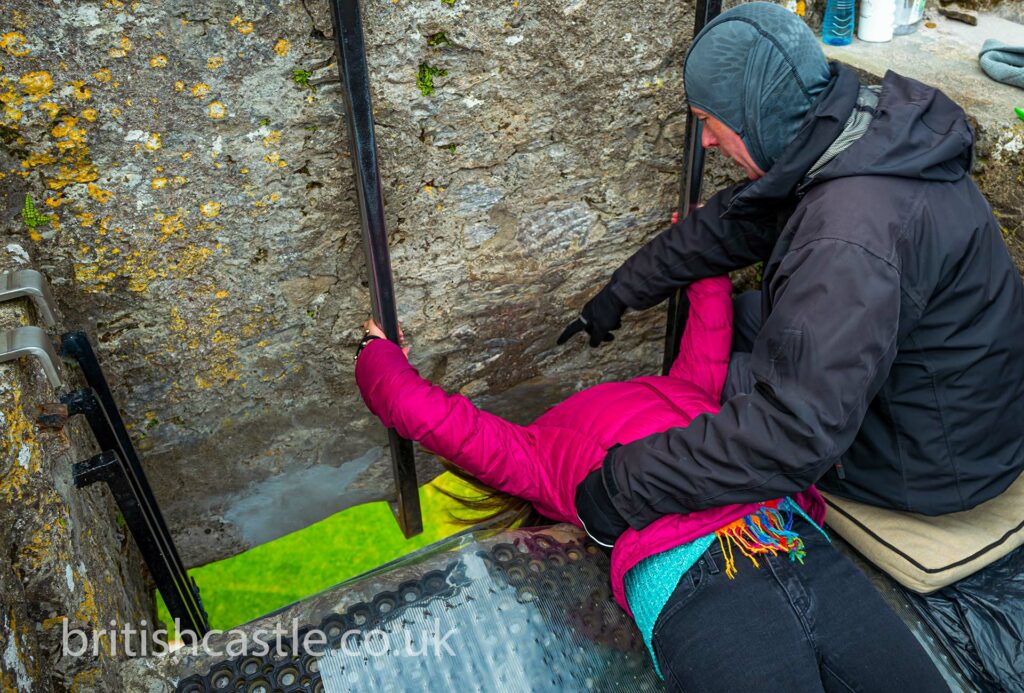
Visitors from all over the world come to Blarney Castle to do this time honoured ritual. To kiss the stone you have to lean backwards over a sheer drop, holding onto a handrail for support. It’s a thrill that’s been shared by millions – world leaders and celebrities included – all hoping to get the legendary gift of the gab. The Blarney Stone is one of Ireland’s most popular and enduring attractions.
Visiting Blarney Castle and the Blarney Stone
Over the years, countless artisans, writers, politicians and celebrities have made their way across the Cork landscape towards Blarney Castle to take in the sumptuous grounds, the stunning architecture and, more often than not, to scale the towers and grab a few moments alone with the Blarney Stone (or, as it is known locally, The Stone of Eloquence).
Since the late 1800s, audiences have converged on Blarney Castle to ascend the stairs and kiss the famed stone. Past visitors have included Winston Churchill and U.S. President William H. Taft. In 2006, The Discovery Travel Channel listed ‘kissing the Blarney Stone’ among its Ninety-Nine Things To Do Before You Die.
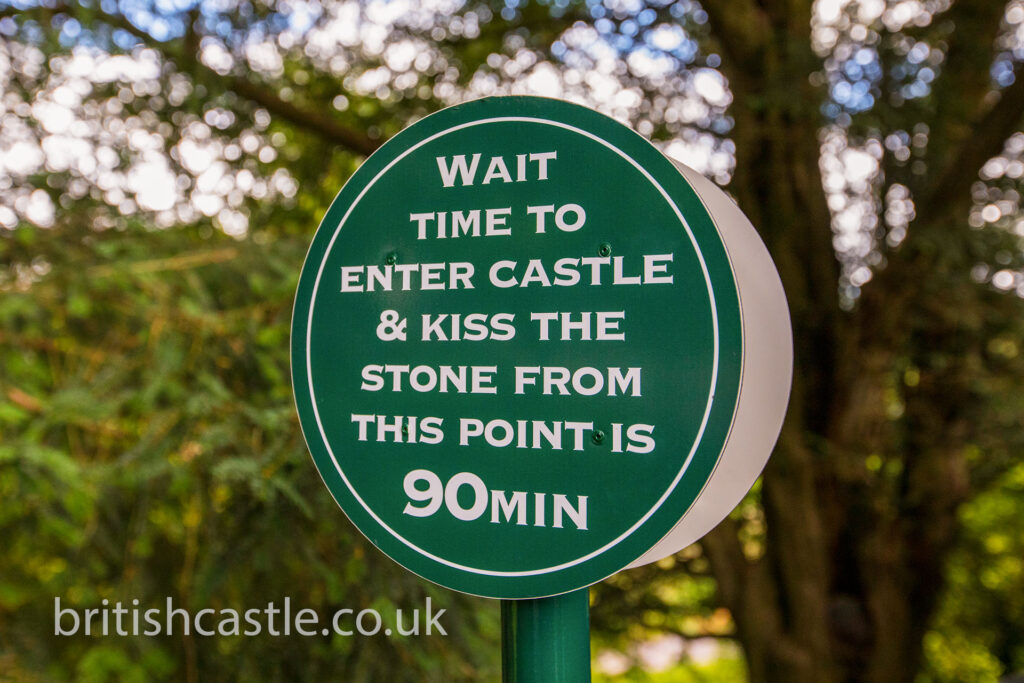
For those looking to extend their visit, the Blarney Castle Hotel offers convenient accommodations with easy access to the castle grounds and the opportunity to enjoy the attractions without long waits
However, if heights are not for you, there are still plenty of attractions to experience at Blarney Castle, including ample walking areas throughout the grounds that serve as a prime example of Irish beauty and ingenuity.
Getting to Blarney Castle
Blarney Castle is just outside Cork City and is accessible by bus and car. The journey to the castle is lovely and the bus winds its way along the River Martin and through the Irish countryside. As you approach the castle you will see several natural rock formations, the Witch’s Cave and the Druid’s Circle, which add to the magic of the visit.
Once you are at the castle you can explore the gardens which are a wonder of nature. The Fern Garden is a must see, it’s so green and peaceful. The Himalayan Walk and the Wishing Steps are also a must see, each one a different experience.
Blarney Castle Gardens and Poisoned Garden
When visiting Blarney Castle, audiences will notice the numerous green spaces available throughout the property grounds, each offering a unique showcase of flora and fauna. For example, The Poison Garden –– hidden behind the Castle battlements and featuring a collection of poisonous plants from around the world, including mandrake, cannabis and opium. Also, the Herbaceous Border, which boasts a 90-metre-long display of gloriously colourful and rare perennials and annuals. The recent addition of a pergola with planted roses in white (in honour of the City of York) and pink makes this winsome walk a must-see.
The word ‘blarney’ itself has become synonymous with clever, flattering, or coaxing talk, a testament to the myths and stories associated with the site.
Other gardens and green spaces to experience include:
- Bog Garden
- Fern Garden & Ice House
- Himalayan Walk
- The Seven Sisters
- The Jungle
- Arboretum
- The Woodlands
Blarney Castle remains in partial ruins, although some battlements and areas are accessible for guided tours. Blarney House is open to the public and can be experienced in groups. For more information on everything travel to Blarney Castle, or nearby Cork country, visit their website here.
Places to Visit in the Castle
Blarney Castle is a treasure trove of history and mystery, with loads of things to see and do. Beyond the Blarney Stone and the Poison Garden, the castle itself is a wonder to explore.
- The Banqueting Hall: This grand room was the social hub of the castle, where lavish banquets and parties would take place. The high ceilings and grandeur will transport you back to medieval times.
- The Family Room: A snug and intimate space, the Family Room was where the castle dwellers would relax and entertain. The warmth of the room gives you a glimpse into the daily life of the castle folk.
- The Dungeon: For the morbidly curious, the Dungeon is a real treat. A narrow staircase leads to a series of cells, into the darker side of the castle’s past.
- The Kitchen: This busy room was the heart of the castle’s culinary activity, where meals were cooked for the castle’s inhabitants and visitors. The Kitchen’s rusticness and historical bits and bobs make it a great stop on the tour.
- The Chapel: A place of prayer and contemplation, the Chapel is a peaceful and holy space in the castle. Simple and beautiful it’s a moment of calm in the midst of all the grandeur.
Plan Your Visit
Blarney Castle is open all year except Christmas Day and New Year’s Day. Check the castle website for up to date opening hours and prices. The castle has a cafe, take away snack hut and several shops selling souvenirs and Blarney Castle branded goods.
The gardens are partially wheelchair friendly. Free car parking and coach parking. Accessible toilets and disability parking. Assistance dogs are allowed so all can enjoy Blarney Castle.